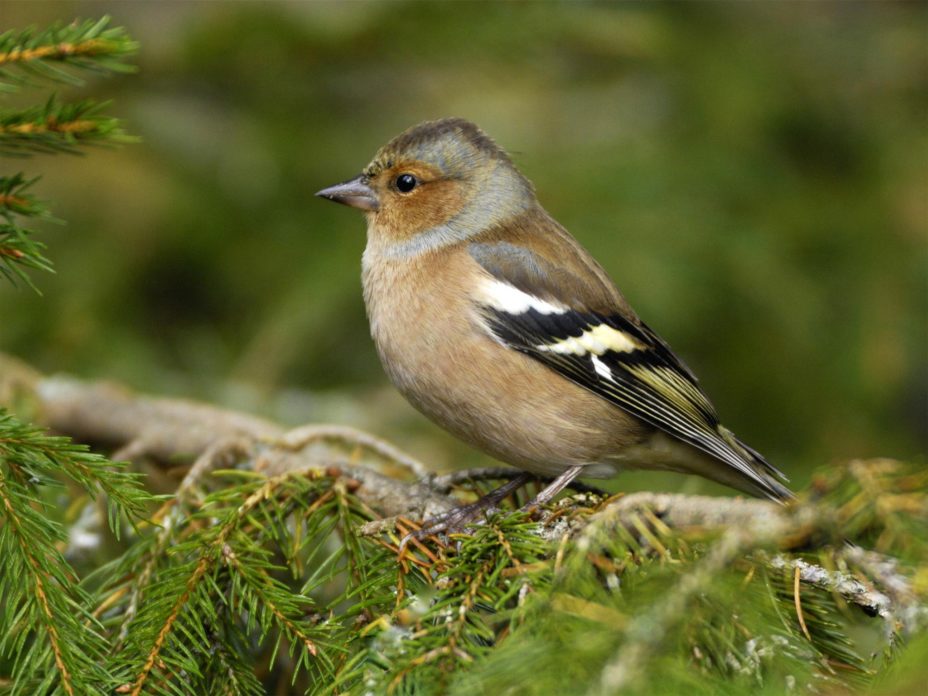Attracting Backyard Birds with Mike Matherly
At its first meeting in 2020, Mission Hills Garden Club was entertained and educated about what we could do to encourage birds to visit our yards. A long-time member of the Audubon Society, Mike Matherly is well versed about birds. As he took us through his slide show, he knew what species was singing in all photos he had taken from his own yard. His focus was on how to attract and keep birds in your yard while maintaining their health, safety, and pleasure.
Birds need shelter, a place that shields them from inclement weather and from predators. While feeding wild animals is frowned upon, Matherly asked us if it is unethical to have birdhouses or bird feeders. His answer is an emphatic no. Birds will enjoy your offerings as a treat, but they find the mainstay of their diet themselves.
Matherly spoke about the little hummingbird. Its wings beat 20 times a second while its heartbeat is 1000 beats per second. To maintain this incredible activity, it must eat its weight in nectar every day. Birds that are prey should be fed near dense shrubbery or places where they can seek safety quickly and easily.
What you feed depends on whom you wish to feed. Hummingbirds are best fed a homemade sugar water. To kill any bacteria, boil four cups of water for a few minutes. Then add one cup of sugar. Once the sugar has dissolved, put it in a clean feeder. Whenever the water in the feeder appears cloudy, remove the feeder, dump the water, and clean the feeder carefully. Hanging the feeder in shade slows bacterial growth. For other birds, make your own mix of seeds. Pre-packaged seed often has corn as a filler, which most birds cannot eat. Sunflower seeds are a great favorite of house finches.
Blue birds love mealworms. (Pet stores sell them.) Most birds enjoy a meal of insects and bugs. When you clean your garden, place a collection of fallen leaves where bugs will propagate near the feeder or housing for your visitors. The birds will feast. A wide base on your feeder will attract doves that are notoriously messy feeders. Keeping the ground clean of fallen seed avoids attracting vermin: mice, rats, and other potential pests. Matherly also often uses feeders with a moat to keep ants away. Millet is a food that can be fed on the ground. White crowned sparrows migrating from Alaska would enjoy such a treat.
Birdhouses and bird feeders need to be cleaned. Vinegar mixed with dish soap is good to use. Both feeders and houses should come apart easily so you can clean them. Should you find a dead bird, take away all food and any shelter you’ve made. Clean everything thoroughly with bleach. Wait a few weeks before replacing these items to prevent possible spread of disease.
To keep birds safe from knocking themselves out or breaking their necks by flying full speed into a window, keep feeders less that three feet away or more than 30 feet away from the glass. Matherly and his wife hung Zen curtains: parachute cords spaced about four inches apart in front of a picture window. The threads do not disturb your view, but they alert birds to slow down.
Another major killer of birds is the house cat. Each cat can kill about 100 birds annually. These cats are one of the major threats of certain birds’ extinction. The only solution is to keep your cat indoors. An indoor cat lives about 15 years whereas an outdoor cat’s average lifetime is three years. Vets advocate keeping your cat indoors to protect it from larger predators such as coyotes and some of the larger raptors, from possible poisonings, from becoming roadkill, from infectious diseases, and from bringing in fleas or getting an abscess from a cat fight.
Birds need to bathe frequently to clean excessive oil and dirt from their feathers. They love a birdbath, which must have a ledge or large rocks so the bird can easily enter and leave the water. Keeping it clean is essential. Mold can be killed with bleach and then carefully wash the bath using a brush if necessary.
The water should be dumped and refilled daily (cleanliness for the birds and avoiding mosquitoes for the humans). Scrub the bath to remove algae every two weeks. To make the birds really happy, arrange a way to have a drop of water hit the bath every few seconds. This can be done with a split faucet for two hoses so you can use one at a time. Buy a hooked stand and fasten one hose securely to the hook. Firmly anchor the other end in the ground. Adjust the flow on so only a drop is released every few seconds. This entertains birds.
Matherly’s talk was educational and entertaining. His talk was extremely well organized. I am anxious to get a birdbath; I don’t need a hummingbird feeder with a plethora of tubular flowered plants and hordes of hummingbirds; I am too lazy to deal with birdseed. I do subscribe to the Audubon Society’s Newsletter, which I enjoy despite not being a “birder.”
This month we meet from 6 to 8 p.m., Wednesday, February 26 at the Mission Hills Church of Christ at 4070 Jackdaw. The topic is Why We Do What We Do to Maintain Our Gardens with Bill Tall.

Category: Animals, Education, Gardening, Local News







